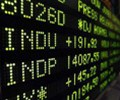
Asian shares rose slightly on Friday, taking support from China’s unexpectedly strong economic growth at the end of last year, although gains were limited by caution ahead of Donald Trump’s inauguration as US president next week.
But Japan’s stock market struggled, with the Nikkei on track for a third straight week of declines, after the yen surged to its highest level in a month on growing speculation of a Bank of Japan interest rate hike in the near future.
The dollar recovered some of its sharp losses against other major currencies on Thursday, the result of revived bets on a Federal Reserve interest rate cut in June. Treasury yields also halted their decline, but remained near previous session lows.
China’s economy grew by 5% last year, in line with the government’s target, but unevenly, with many people complaining of worsening living standards as Beijing struggles to transfer its industrial and export profits to consumers.
“The Chinese market still faces structural headwinds as well as tariff risks, and the response to these will be a key driver of long-term returns,” said Charu Chanana, chief investment strategist at Saxo.
Mainland Chinese blue chips 3399300 were up 0.47% at 0632 GMT, while Hong Kong’s Hang Seng HSI added 0.29%. The Chinese yuan USDCNH was flat at 7.3423 per dollar in offshore trade.
Japan’s Nikkei shed 0.31%, paring earlier losses of more than 1%. The yen had earlier risen to its highest level since Dec. 19 at 154.98 per dollar then reversed course to last trade about 0.4% lower at 155.69.
The MSCI world index EURONEXT:IACWI edged down 0.05%. Asia Pacific’s broadest stock index (.MIAP00000PUS) lost 0.17%.
European stock futures pointed higher, especially in the UK where FTSE futures rose 0.47%. The pan-European STOXX 50 futures edged up 0.04%.
U.S. S&P 500 futures rose 0.15%, after the cash index closed down 0.2% overnight. The small decline came after a 1.8% jump on Wednesday – the biggest daily percentage gain since the post-election rally on November 6 – driven by strong bank earnings at the start of the new reporting season.
“Investors are enjoying reconciling the market narrative with company fundamentals and away from macro, with the earnings season proving strong so far,” said Kyle Rodda, senior financial markets analyst at Capital.com.
At the same time, the decline in the dollar and bond yields occurred as “concerns about stiff or rebounding inflation and a prolonged pause or end to the Fed’s policy cutting cycle eased,” he said.
Ten-year US Treasury yields were at 4.6148% in the latest session, after slumping to their lowest level since Jan. 6 at 4.5880% on Thursday, when Fed Governor Christopher Waller said three or four rate cuts this year were still possible carried out if US economic data is released. weakened.
Ten-year Japanese government bond yields (JP10YTN=JBTC) fell along with Treasuries overnight, even as comments from BOJ Governor Kazuo Ueda and one of his deputies, Ryozo Himino, this week prompted increased bets for a quarter-point rate hike. on January 24 it was 78%. They indicated wage growth is likely to remain strong this year and Japan is making progress in achieving its inflation target.
Sources told Reuters that following a possible policy tightening, the central bank will maintain its promise to continue raising borrowing costs if the economy continues to recover.
The dollar index – which measures the greenback against a basket of six major currencies, including the yen – edged up 0.14% to 109.12, but remained 0.47% lower for the week, threatening to snap a six-week winning streak.
The euro weakened 0.13% to $1.02875, while sterling lost 0.21% to $1.2213.
Falling bond yields support alternative assets.
Bitcoin edged up to $102,050.99 for the first time since January 7.
Gold was at $2,712.36, near Thursday’s high of $2,724.55, the strongest in more than a month.
Meanwhile, crude oil headed for a fourth straight weekly gain as the latest US sanctions on Russian energy trade took a toll on supplies and pushed up spot prices and shipping rates.
Brent crude futures rose 0.44% to $81.65 a barrel, likely to rise 1.9% this week. U.S. West Texas Intermediate crude futures rose 0.67% to $79.21 a barrel, heading for a 2.76% gain for the week.




